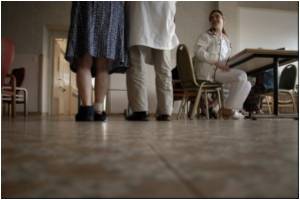There are some pre-conceived notions among people such as if it is death by homicide, the victim is probably black; by cirrhosis, the decedent is likely Native American.

When coroners, medical examiners or funeral directors across the United States fill out death certificates, it appears the racial classifications they make are influenced by the decedent's cause of death in ways that reflect long-running stereotypes about violence and alcoholism, says Aliya Saperstein, professor of sociology at the University of Oregon.
Saperstein teamed with UC Irvine sociologists Andrew Noymer and Andrew M. Penner on the study. They found that, for all deaths, 1.1 percent of racial classifications in official statistics differed from reports by the decedent's next of kin. The likelihood of discrepancies, however, varies significantly across the population. Inconsistency rose to 8.8 percent overall among decedents classified as American Indian or Alaska Native.
The patterns are described in a paper published online Jan. 26 in PLoS One, an open-access journal of the Public Library of Science. They emerged in a review of 22,905 death certificates drawn from the 1993 National Mortality Followback Survey. The survey, developed by the National Center for Health Statistics, provides a sample of U.S. residents who die in a given year and supplements the death certificate with information from the next of kin or another person familiar with a deceased person's life history. The information allows for scrutiny of disease and demographic factors.
"We didn't find much inconsistency, but we shouldn't be finding these patterns by cause of death at all," Saperstein said. "Either there shouldn't be discrepancies, or they should be more randomly distributed. The skew we found reinforces existing racial disparities."
Nationally, during the time period covered by the research, records of the National Center for Health Statistics showed that American Indians were 2.6 times more likely than whites to die of cirrhosis or chronic liver disease, and that blacks were 6.6 times more likely than whites to be homicide victims.
Advertisement
While the discrepancies emerged when the death certificates were compared to racial classifications by next of kin, the researchers noted that it was not clear which report should be considered correct. The differing classifications, they said, provide insights into how an individual's race can be defined differently in different contexts.
In the study, other factors such as occupation, income, veteran status and places of death were examined but did not account for the link between racial classification and cause of death. The patterns also were similar regardless of whether or not the decedent was described as Hispanic or multiracial by their next of kin.
"Our results suggest that the disparities have started to take on a life of their own, to become self-fulfilling prophecies. People are so used to thinking in stereotypical terms that they create the associations even when they are not actually there," Saperstein said. "The inconsistencies in racial classification are windows into what race means in the United States and how racial distinctions and boundaries are created."
Source-Eurekalert









